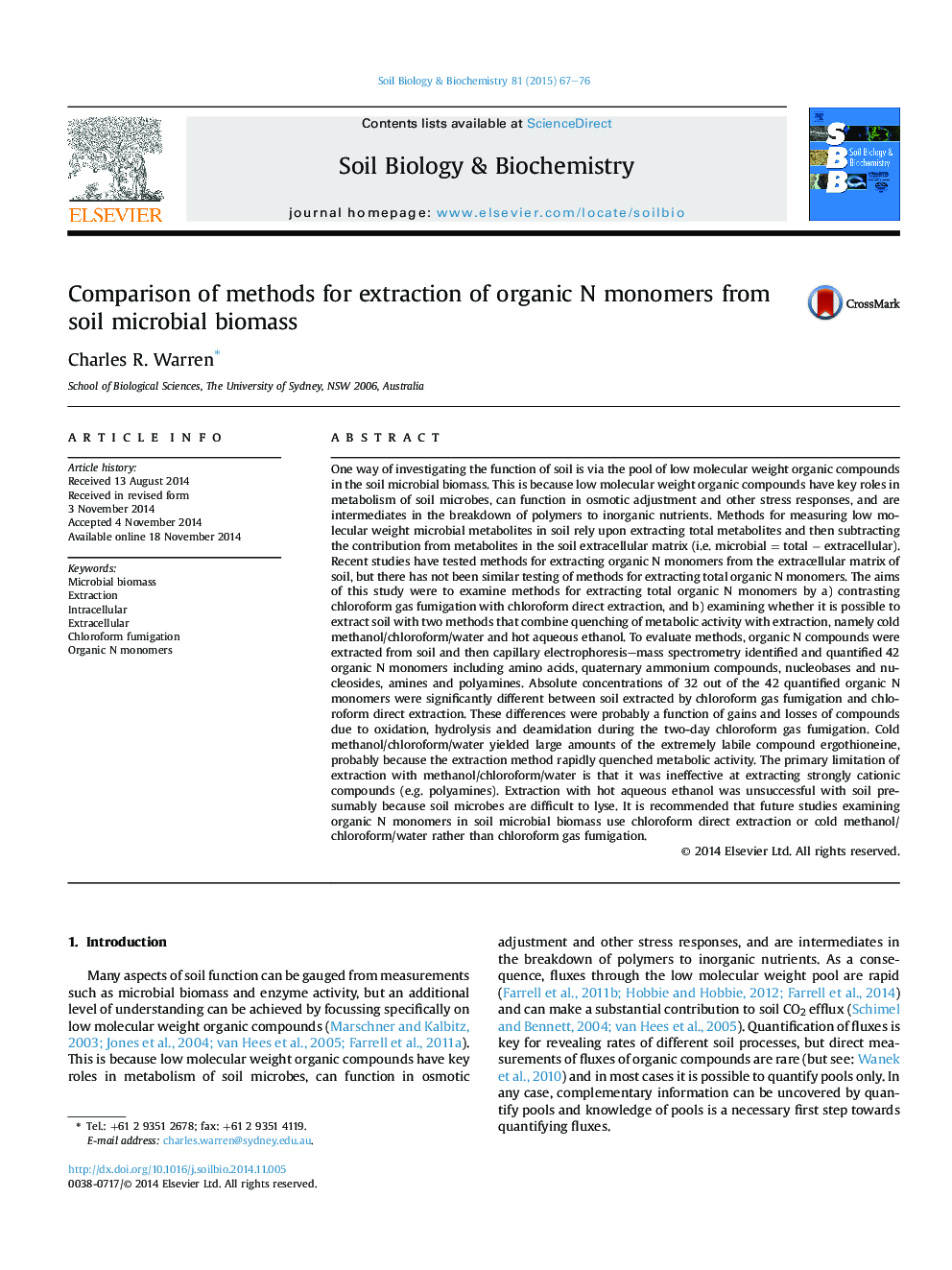| کد مقاله | کد نشریه | سال انتشار | مقاله انگلیسی | نسخه تمام متن |
|---|---|---|---|---|
| 2024414 | 1542603 | 2015 | 10 صفحه PDF | دانلود رایگان |

• Extraction methods affect total (extracellular + intracellular) organic N monomers.
• There were large differences between CHCl3 direct extracts and CHCl3 gas fumigation.
• Labile compounds were abundant in CHCl3 direct extracts and methanol/chloroform/water extracts.
• Hot aqueous ethanol was poor at extracting organic N monomers from soil.
One way of investigating the function of soil is via the pool of low molecular weight organic compounds in the soil microbial biomass. This is because low molecular weight organic compounds have key roles in metabolism of soil microbes, can function in osmotic adjustment and other stress responses, and are intermediates in the breakdown of polymers to inorganic nutrients. Methods for measuring low molecular weight microbial metabolites in soil rely upon extracting total metabolites and then subtracting the contribution from metabolites in the soil extracellular matrix (i.e. microbial = total − extracellular). Recent studies have tested methods for extracting organic N monomers from the extracellular matrix of soil, but there has not been similar testing of methods for extracting total organic N monomers. The aims of this study were to examine methods for extracting total organic N monomers by a) contrasting chloroform gas fumigation with chloroform direct extraction, and b) examining whether it is possible to extract soil with two methods that combine quenching of metabolic activity with extraction, namely cold methanol/chloroform/water and hot aqueous ethanol. To evaluate methods, organic N compounds were extracted from soil and then capillary electrophoresis–mass spectrometry identified and quantified 42 organic N monomers including amino acids, quaternary ammonium compounds, nucleobases and nucleosides, amines and polyamines. Absolute concentrations of 32 out of the 42 quantified organic N monomers were significantly different between soil extracted by chloroform gas fumigation and chloroform direct extraction. These differences were probably a function of gains and losses of compounds due to oxidation, hydrolysis and deamidation during the two-day chloroform gas fumigation. Cold methanol/chloroform/water yielded large amounts of the extremely labile compound ergothioneine, probably because the extraction method rapidly quenched metabolic activity. The primary limitation of extraction with methanol/chloroform/water is that it was ineffective at extracting strongly cationic compounds (e.g. polyamines). Extraction with hot aqueous ethanol was unsuccessful with soil presumably because soil microbes are difficult to lyse. It is recommended that future studies examining organic N monomers in soil microbial biomass use chloroform direct extraction or cold methanol/chloroform/water rather than chloroform gas fumigation.
Journal: Soil Biology and Biochemistry - Volume 81, February 2015, Pages 67–76